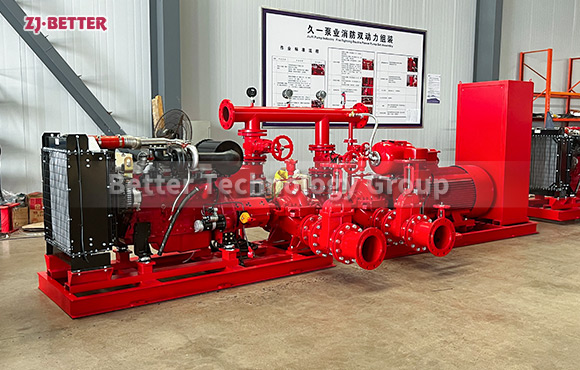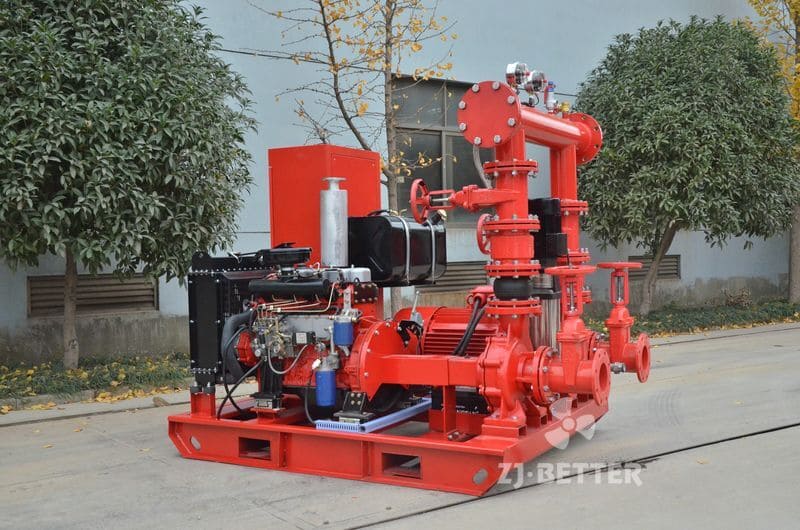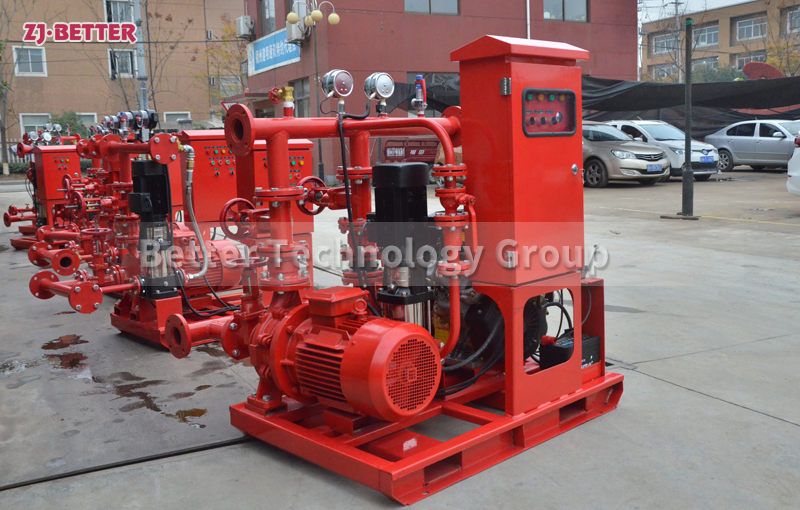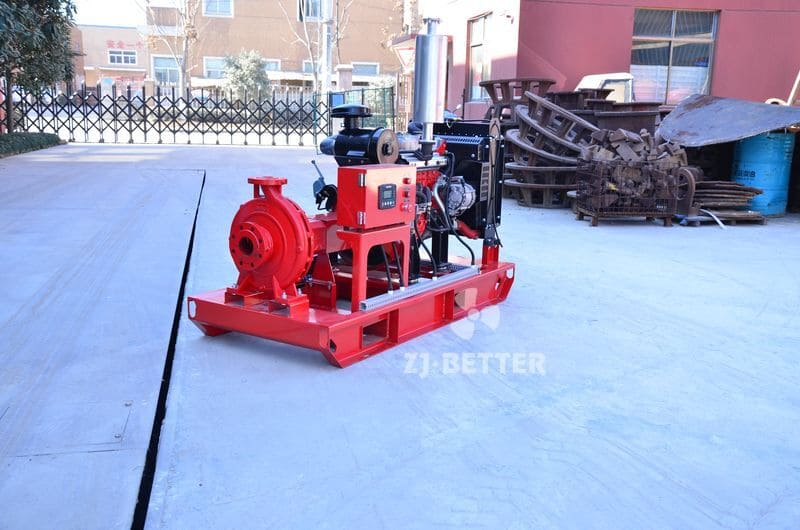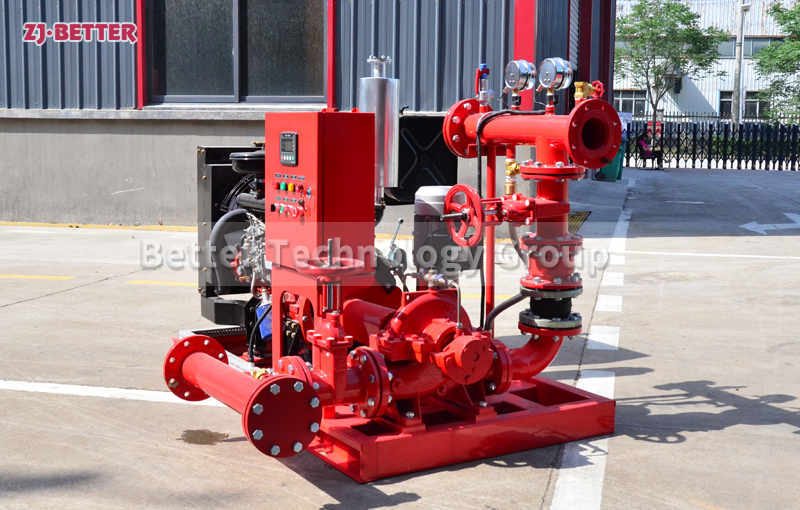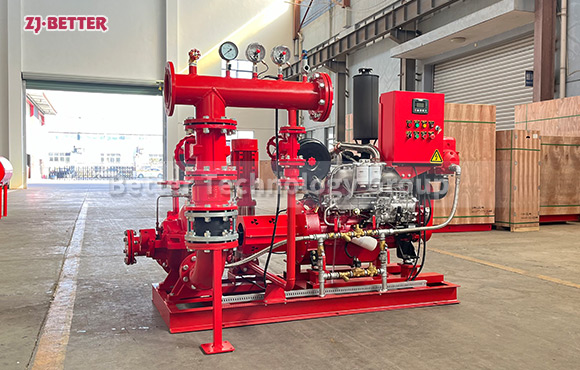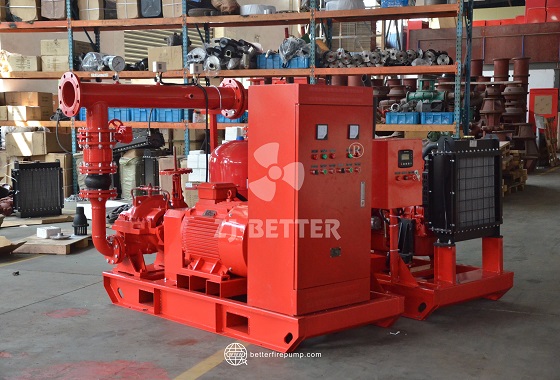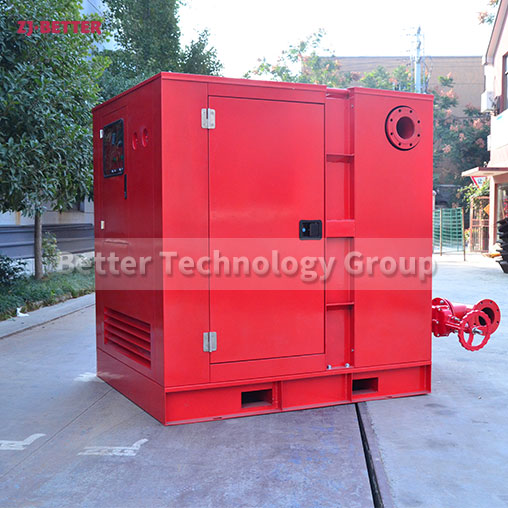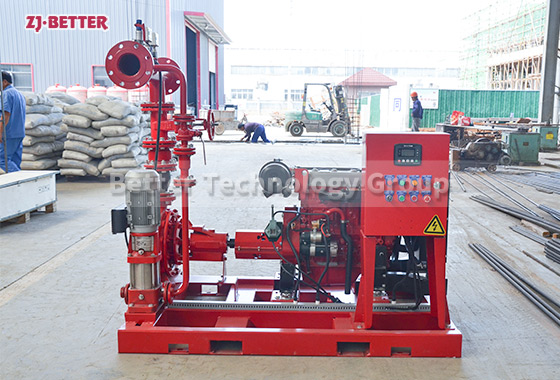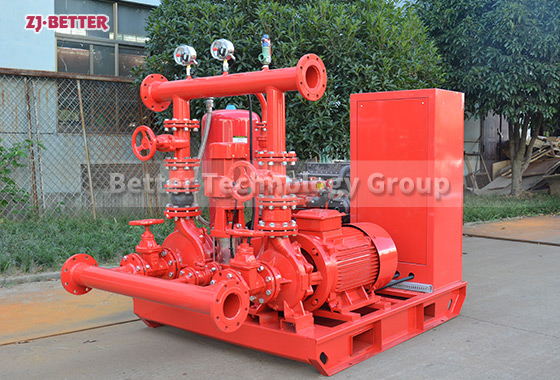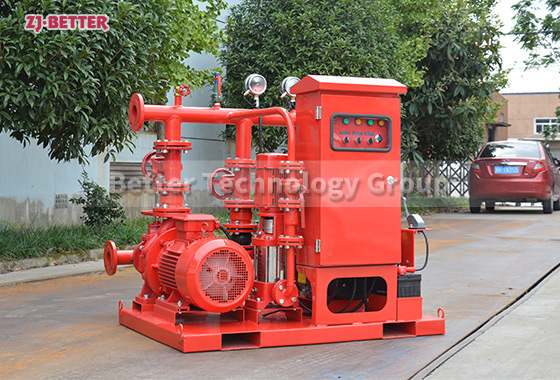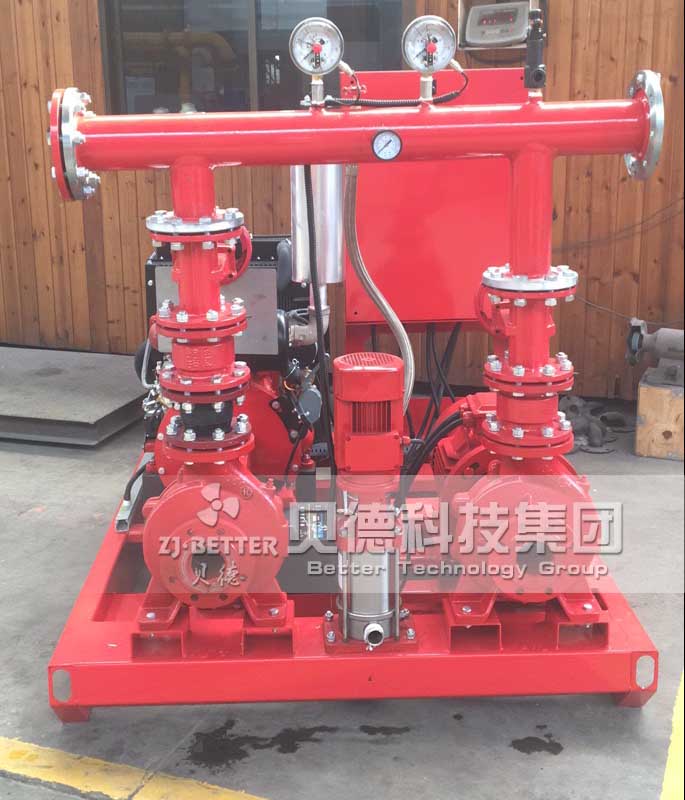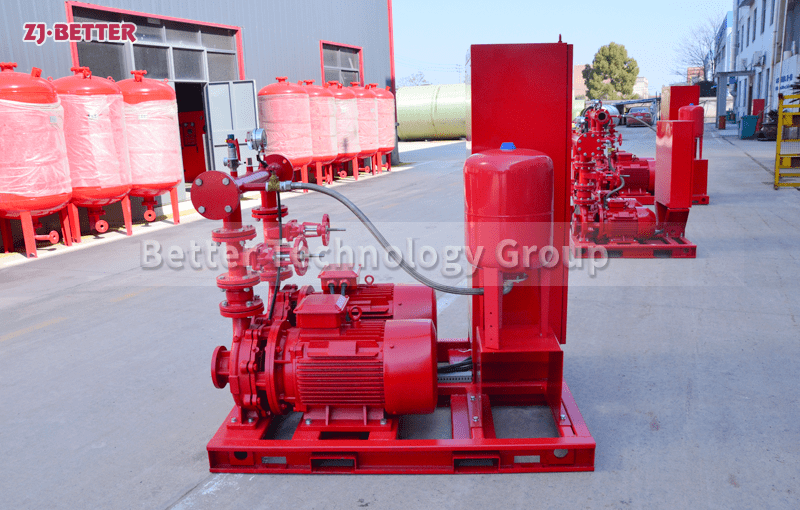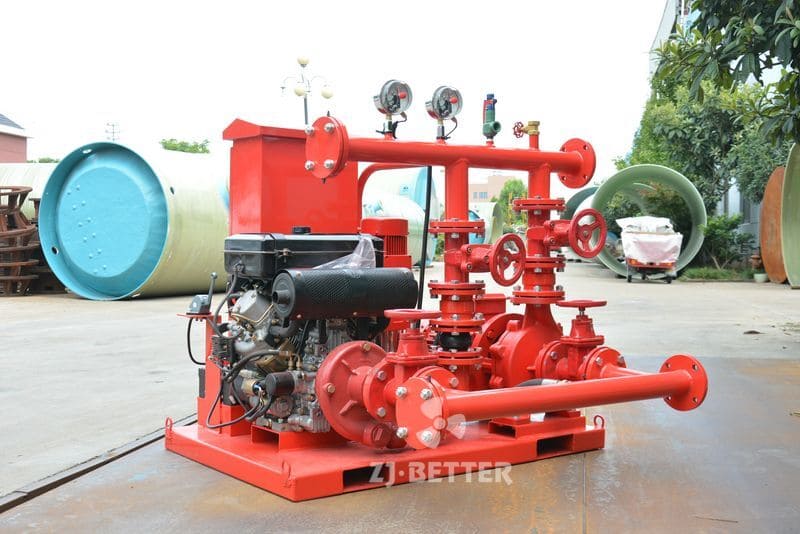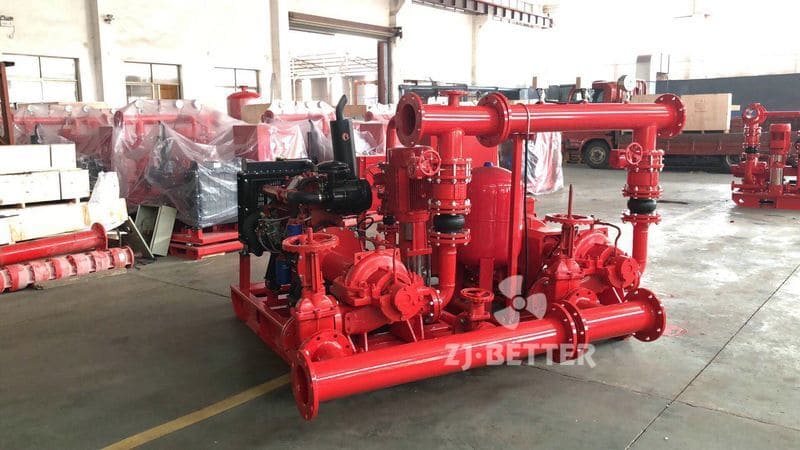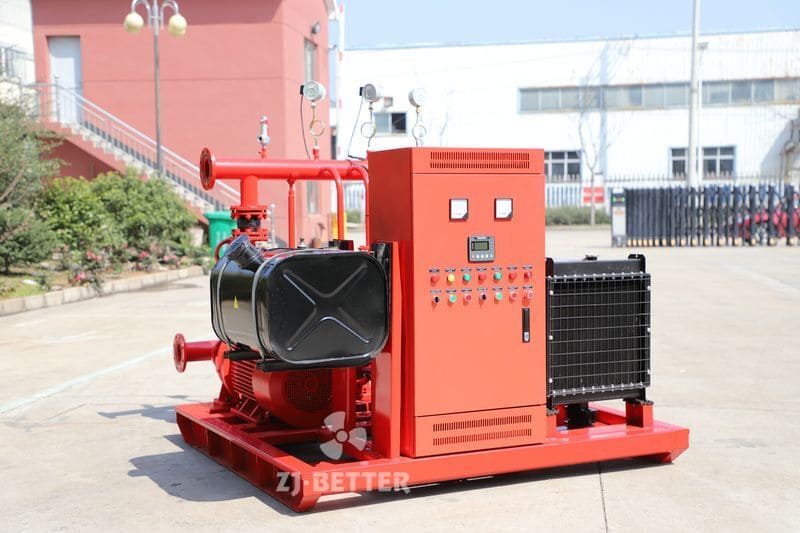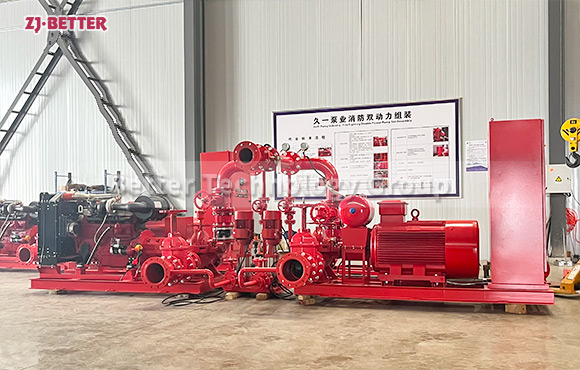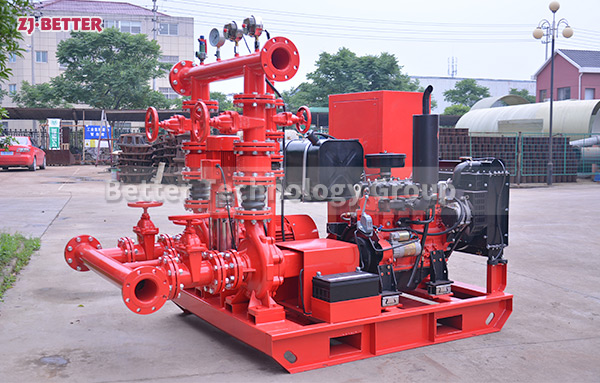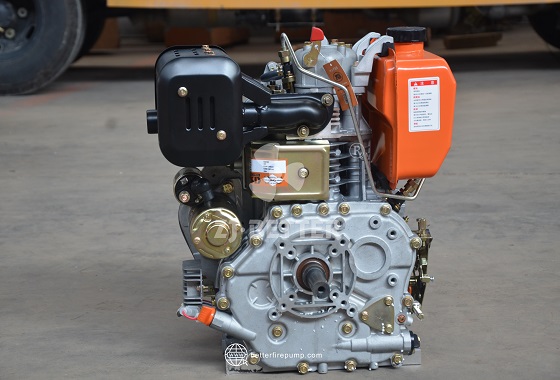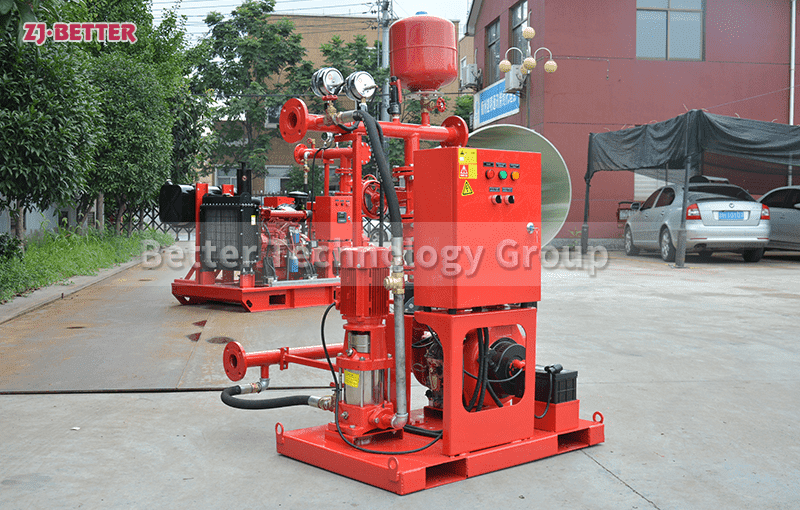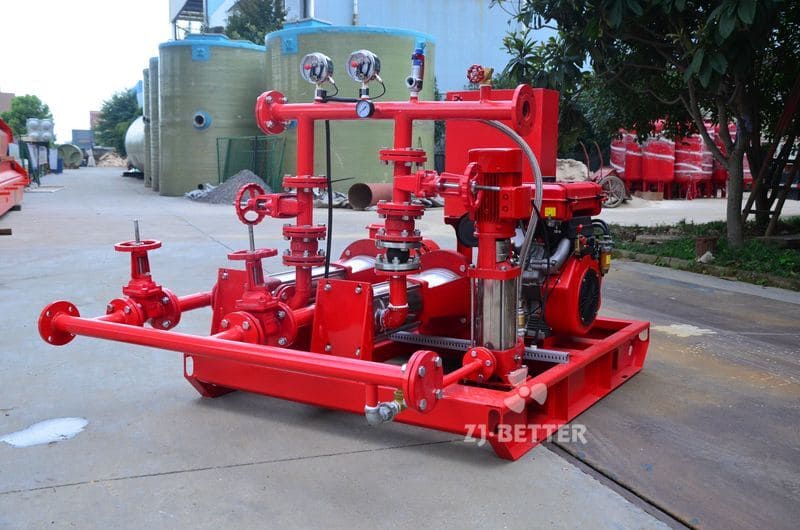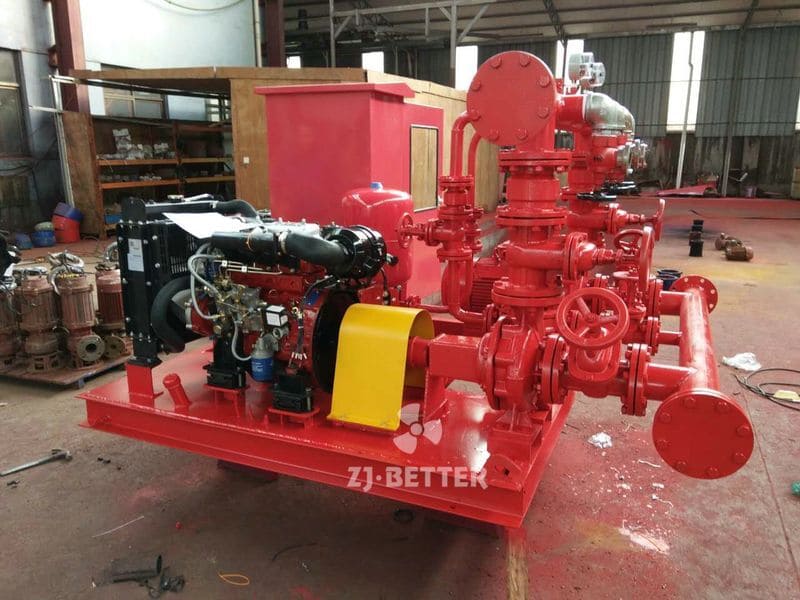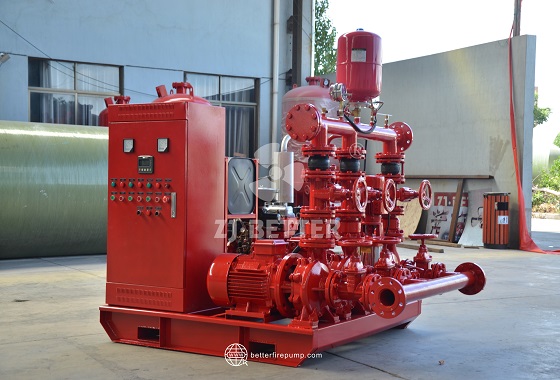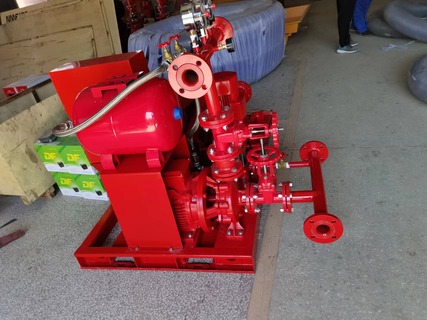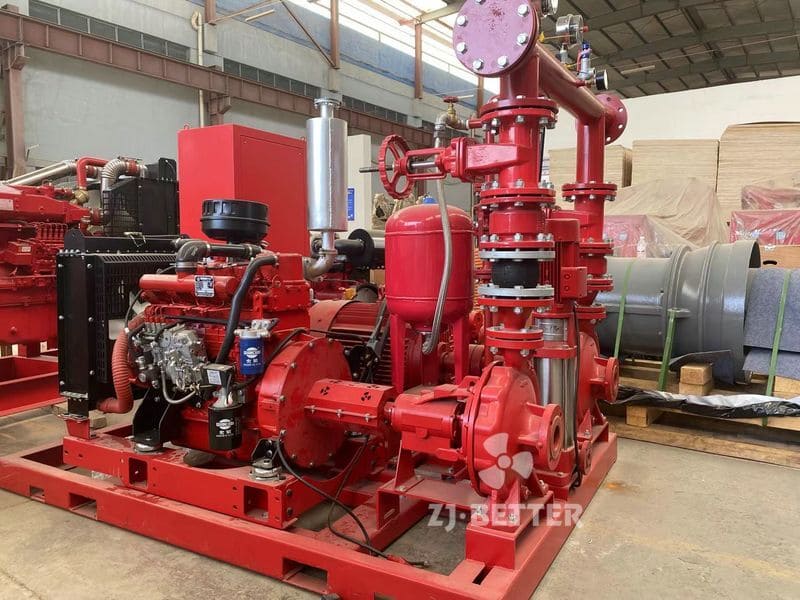Making Safety Smarter: Technological Advantages of Modern Automatic Pressure Fire Pump Systems
The automatic pressure-stabilizing fire pump system, centered around intelligent control and energy efficiency, provides a continuous and stable fire water supply for various buildings and industrial facilities. Featuring automatic monitoring, constant water pressure regulation, remote management, and multiple safety features, it offers reliable operation, easy maintenance, energy conservation, and environmental protection, making it an ideal choice for modern fire safety systems.
In the process of modern urban construction and industrial development, fire safety has become a crucial indicator of a project’s safety standards and management level. As a core component of the fire water supply system, the performance of the fire pump system directly determines the system’s response speed and stability in emergency situations. With the continuous advancement of technology, traditional mechanical fire pump systems are gradually being replaced by new, integrated, automated, and intelligent pressure-stabilizing fire pump systems. These systems not only feature automatic monitoring, intelligent control, and energy-saving operation, but also achieve a qualitative leap in stability, reliability, and safety. Modern automatic pressure-stabilizing fire pump systems utilize advanced automatic control technology, combining efficient pump structures with intelligent electronic control devices to achieve fully automated control from startup, operation, pressure stabilization, to shutdown. The system’s design fully accounts for the fluctuating water pressure requirements under varying operating conditions. By monitoring the pipe network pressure in real time and automatically starting and stopping the pressure-stabilizing pump, the system ensures that the entire fire protection system remains within the set safety pressure range at all times, providing continuous and reliable pressure support for the fire water supply system. Compared with traditional systems, modern automatic pressure-stabilizing systems offer significant advantages such as fast response time, high regulation accuracy, and low operating noise. The electronic control system typically utilizes an advanced PLC (Programmable Logic Controller) or intelligent control module, which automatically adjusts the pump’s start and stop frequency based on actual water pressure fluctuations. This prevents mechanical wear and tear caused by frequent starts, reduces energy consumption, and achieves truly energy-efficient operation. Furthermore, the system incorporates multiple protection features, such as overload, overpressure, water shortage, and motor temperature protection, ensuring safe shutdown under any abnormal conditions and preventing the spread of system failures. Modern automatic pressure-stabilizing fire pump systems feature comprehensive structural design optimizations. The pump body is typically constructed of high-strength cast iron or stainless steel, offering excellent corrosion resistance and high-pressure resistance, ensuring stable output even during long-term, high-intensity operation. The pump’s hydraulic design utilizes optimized impeller and flow path structures to ensure smoother fluid flow, minimize energy loss, and improve overall hydraulic efficiency. The motor utilizes a high-efficiency, energy-saving motor with low operating temperature rise, minimal vibration, and a long service life, ensuring efficient system operation. Notably, modern automatic pressure-stabilizing fire pump systems feature exceptional intelligent monitoring and remote management. Through its built-in intelligent control module and communication interface, the system can interconnect with fire control centers or building automation systems, transmitting key parameters such as operating status, pressure changes, and current load in real time, enabling remote monitoring and management. If the system detects a pressure drop or abnormality, the control system automatically issues an alarm and activates a backup pump set to ensure uninterrupted water supply. This intelligent response mechanism significantly enhances the fire system’s emergency response capabilities, providing a solid foundation for fire safety in critical locations such as high-rise buildings, industrial plants, airports, and hospitals. Energy conservation and environmental protection are another key strength of modern automatic pressure-stabilizing fire pump systems. Using variable frequency control technology, the system automatically adjusts pump speed based on actual water demand, maintaining a dynamic balance between output power and pressure requirements, significantly reducing energy consumption. During low-load operation, the pump speed automatically decreases to maintain a constant pressure, avoiding the high energy consumption associated with traditional power-frequency control. According to actual operational data, automatic pressure-stabilizing systems using variable frequency control can save 20% to 40% energy compared to traditional systems, reducing operating costs while also aligning with the concept of green, energy-saving, and sustainable development. These systems are also highly adaptable and scalable, allowing for flexible configuration to suit diverse application scenarios. Whether for high-rise buildings with independent water supplies, industrial parks requiring long-distance water transport, or the petrochemical and energy industries demanding high reliability, modern automatic pressure-stabilizing fire pump systems offer customized solutions through their modular design. Their control system can be configured for multi-pump rotation according to site requirements, extending the service life of each pump while balancing wear and tear, effectively improving overall system stability and longevity. Ease of maintenance is also a key advantage of this system. The system’s modular design allows for easy assembly and disassembly of major components for maintenance. The electronic control unit features a self-diagnostic function that automatically detects system operating status and provides maintenance prompts, reducing the frequency of manual inspections. The pump unit’s compact design and small footprint make it ideal for installation in space-constrained equipment rooms. Optimized piping layout and a vibration-damping base design not only enhance operational stability but also reduce noise and vibration, providing a more comfortable operating environment. Modern automatic pressure-stabilizing fire pump systems are widely used in high-rise buildings, underground garages, urban complexes, industrial plants, airports, docks, hospitals, and warehouses and logistics centers. These locations place extremely high demands on the fire protection system’s responsiveness, stability, and reliability. Automatic pressure-stabilizing systems maintain constant pipe network pressure under normal conditions, providing immediate response upon fire alarms, ensuring adequate water pressure for fire hydrants and sprinkler systems, and buying valuable time for initial firefighting. Regarding safety, modern systems are designed to comply with international fire protection standards and feature comprehensive detection and control capabilities. All key components undergo rigorous testing to ensure efficient and stable operation even in extreme environments. The system’s control cabinet features an intuitive human-machine interface for easy operation, supporting both manual and automatic control modes, allowing users to flexibly switch between them based on their needs. In emergencies, the system automatically switches to a backup power source or standby pump to ensure uninterrupted water supply. Overall, the emergence of modern automatic pressure-stabilizing fire pump systems not only represents the trend toward intelligent and integrated fire water supply equipment, but also marks a new era in fire safety management. Through high-precision control technology, energy-saving operation, and remote intelligent management, they transform traditional passive fire water supply systems into active safety protection systems, achieving the transition from “reliable operation” to “intelligent protection.” Whether safeguarding life or property, automatic pressure-stabilizing fire pump systems demonstrate irreplaceable value. In the future, with the further application of the Internet of Things, big data, and artificial intelligence technologies, fire pump systems will achieve a higher level of intelligent monitoring and autonomous decision-making, providing safer, more efficient, and energy-efficient fire water supply for various buildings and facilities, making safety truly smarter and more reliable.



